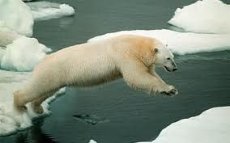New publications
Environmentalists: By 2100, one in ten species will be threatened with extinction
Last reviewed: 30.06.2025

All iLive content is medically reviewed or fact checked to ensure as much factual accuracy as possible.
We have strict sourcing guidelines and only link to reputable media sites, academic research institutions and, whenever possible, medically peer reviewed studies. Note that the numbers in parentheses ([1], [2], etc.) are clickable links to these studies.
If you feel that any of our content is inaccurate, out-of-date, or otherwise questionable, please select it and press Ctrl + Enter.

If current climate change trends continue, one in ten species is at risk of extinction by 2100, researchers from the University of Exeter (UK) have concluded. The scientists took the Red Book and looked at about 200 predictions regarding the effects of climate change, as well as 130 reports on the changes that have already occurred.
Science is not entirely sure how flora and fauna will respond to global warming, so it approaches the issue with great caution. However, there are studies showing how animals and plants adapt to the changes, so the predictions can already be tested. The largest review of such studies ever made it clear that the predictions are generally accurate.
Ilya MacLean, lead author of the paper, notes: “Our study is a wake-up call for many species that are already declining and could go extinct if things continue this way. It’s time to stop playing with uncertainty; that excuse is no longer working. The effects of climate change are already being felt.” The scientists emphasize that global warming is affecting all over the world and all groups of animals and plants. Here are some examples of how life is responding to changing habitats.
The decline of ice cover in the Bering Sea has led to a decline in the number of bivalves from twelve to three per square meter in just 1999–2001. Incidentally, these animals are a major food source for many species higher up the food chain, especially the spectacled eider.
Warming and drought are causing a dramatic decline in the numbers of once-common amphibian species in Yellowstone National Park (USA). From 1992–93 to 2006–08, the tiger salamander population declined by nearly half, the spotted tree frog by 68%, and the marsh tree frog by 75%.
There are few animals in Antarctica, but they have suffered: between 1993 and 2005, the number of nematodes decreased by 65%.
Here’s what to expect. Endemic to Tenerife (Canary Islands), the Cistus Caňadas has a 74–83 percent chance of disappearing within a century due to drought caused by global climate change. In Madagascar, warming will force endemic reptiles and amphibians to retreat higher into the mountains. If temperatures rise by just 2˚C, three species will lose their habitat entirely. Birds living in Europe’s northern boreal forests will also decline: the number of plovers could fall by 97 percent by 2100, and species like the white-winged crossbill and pine grosbeak will simply have nowhere to live.

 [
[